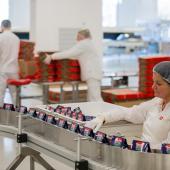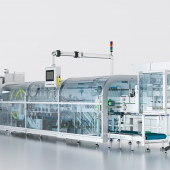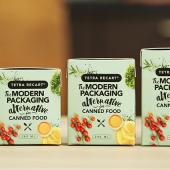PPWR: the final act? Over to Patrizia Toia
At the end of a process that has seen the involvement of the European Parliament, the Industry and Environment commissions, the European Council, the Trilogue phase between these two European institutions, the Commission and finally once more the Parliament, the new Packaging Regulation was definitively approved at the end of April 2024. The process leaves in its wake a lively debate – developed around the structure of the regulation – a number of important legacies between obligations and exceptions, as well as a renewed alignment between social partners, economic components and industrial districts.
Maria Costanza Candi

To take stock and respond to doubts regarding the last-minute modifications made during the final vote on the PPWR in the European Parliament, ItaliaImballaggio has met one of the protagonists of the political debate, the PD Member of the European Parliament, Patrizia Toia, who has reconstructed the process of the measure, highlighting the areas that have made it possible to arrive at a synthesis which is able to envisage a more sustainable economic growth and in which packaging is in the front line.
Has the vote confirmed the previous framework in full or are there changes to highlight?
«If by the framework we mean the Commission’s proposal, the vote has significantly changed the final picture» confirms the MEP. «It has been a process in which we have made progress at every phase, approving a text which is better suited to Italian supply chains, which are an industrial and green example of excellence. We certainly don’t want to defend the undefendable, I want to emphasis, but rather to protect what is very positive in the system. It would, in fact, be senseless to damage our country’s extraordinary recycling performance with a measure imposed from above. I would like to point out that we have always shared the general goals and using a Regulation instead of a Directive, the only tool that guarantees in some way compliance with the uniformity of the single market, thereby allows exporting countries like Italy to operate in the various markets basing its actions on shared rules. The Regulation forms part of the wider strategy of the Green Deal, which aims at reducing the volume of waste, the increase of which is an increasingly serious problem».
What are the most controversial points of the measure?
«The question has always been how to define reduction targets. The measures, therefore, include a percentage of recycled material, positive for the circular economy because it transforms waste into a resource. We have worked on this point, assigning the question to the Industry Commission, partially mitigating the role of the Environment Commission (ENVI) with which we have worked to obtain shared expertise, giving space to the opinion of the supply chains which, although not binding, was essential to guide political choices. This shared expertise is reflected, in particular, in articles 22 and 26, cornerstones of the measure. It’s a strategy that has given the industry Commission the possibility, through my presence, to participate in the Trilogue as a protagonist and in an almost equal position with the Environment Commission».
Can we say that articles 22 and 26 of the PPWR can be defined as strategic for the Italian industrial supply chain?
«The Industry Commission was principally committed to rewriting the two articles, to provide a solution that was truly sustainable but also useful to our industrial system and the disposal and recycling supply chain. Article 26, in particular, introduced a reuse obligation in various percentages for single materials, types of packaging or purpose of use, therefore mixing up paper, cardboard and plastic, and moving away from our system, which sees the process divided into two parts: first packaging and its function and then at end-of-life, the path to developing the recycling or waste supply chain. If this double track hadn’t been respected, the Italian supply chain would have been damaged with a detrimental impact also for the environment. Italy, which recycles up to 85%, would have seen its industrial recycling path stopped by law, with the sole aim of imposing reuse. To avoid dismantling an experience of success, we therefore pushed, albeit in a virtuous framework, for countries to have the right to decide whether to focus on higher objectives. Here, greater flexibility was introduced with respect to the reuse obligations, up to their suspension under certain conditions. With respect to article 22 (whose impact was greater on loose and disposable products, ed.), we intervened strongly on various items including packaging under one and a half kilos which would have been a problem for our producers of fruit and vegetables and of machinery, successful export supply chains in the world. It should also be considered that the structure of the article would have impacted on the food, cosmetics, the hotel and catering industries. We therefore decisively chose a path that allowed us to manage this aspect, leaving some prohibitions which we believe to be marginal overall, like disposables in hotels and plastic ones in canteens and fast-food restaurants».
Packaging for reuse is generally heavier, it creates greater emissions in every phase of its life-cycle and is difficult to recycle at end-of-life; it is therefore not necessarily more sustainable. Certain data and methodologies are needed for determining the carbon footprint, a question that often emerged in discussions. What is your view?
«Our position aimed at mitigating the impact of the prohibitions and obligations, with greater attention on horeca and fast food, demonstrating, with data to hand, that what is apparently more sustainable, if measured correctly, can be less so compared to a disposable container. Multiple use often corresponds to greater consumption of resources, water, energy and CO2 emissions than what happens with a correctly separated, delivered and recycled disposable container. This is why we have pushed for the concept of prevalent material. Packaging is not a nuisance but a necessity to maintain firmness, freshness, avoid the risk of waste and guarantee food safety ».
Will the “orthodox green” line continue to prevail or will there be a return to attention on the internal market and harmonisation?
«There is full awareness of the fact that the Single Market is a cornerstone for Europe and this is why we have been committed to maintaining this common approach. States are, in fact, prevented from modifying the text but possible margins of flexibility are left within a common framework. This is to the advantage of operators that can work throughout the single market. The political objective remains the Single Market and its centrality. In the approach to the parliamentary work, the Industry Commission was recognised shared competence only where discussion referred to innovative packaging and exceptions for small and medium enterprises. We are talking about a definition and two or three paragraphs: I fought an authentic regulatory and political battle to enable us to acquire competence on the whole of article 22, particularly with reference to the prohibitions and on the whole of article 26 with reference to reuse, in addition to innovative materials and packaging with reference to relative exceptions. This political approach completely changed the context and favoured a political rebalancing of relations ».
Thanks to the PPWR, we have seen a unified action without precedent, with industrials, trade unions, mass retail and interest groups, compact together in a position of defence of Italian technological and productive excellence. Do you think this can open up a new political scenario marked by economic growth and innovation?
«I see the new Confindustria, Legacoop and trade union “alliance” as an absolute necessity for a European and continental industrial policy capable of then approaching the different countries with their different aspects. The PPWR was a great opportunity to take a look at our supply chains and inter-sectorial connections between examples of excellence, demonstrating that behind every environmental measure there is an industrial policy to be defined and promoted, since the two themes are not separate as it was initially chosen to believe. We have to achieve the environmental objective, but we need to do so enhancing the production system and reconciling the requirements of the sectors involved. This measure can teach us a lot about how we need to develop a complex policy approach, which includes the main operators united around a common objective: favouring economic growth in which sustainability is in the centre ».
PPWR in summary
Article 22 - Prohibited formats and composite packaging
The prohibitions applied only to disposable plastic for:
- multiple packages of drinks at sales outlets (package of 6, for example, of water and milk);
- fruit and vegetable packaging under 1.5 kg;
- consumption of beverages and food if occurring on site and in the HORECA sector;
- condiments, sauces and preserves in the HORECA sector;
- cosmetics and hygiene products in hotels (all types of disposable packaging of any material);
- ultra-light bags unless necessary for reasons of hygiene or loose food.
The prohibitions shall not apply if:
- the plastic is compostable
- the packaging can be correctly collected and disposed with organic waste (as happens in the Italian supply chain).
The prohibition for fruit and vegetables does not apply:
- for processed fruit and vegetables;
- in the cases in which, as decided by the member State, the packaging is considered as necessary for avoiding loss of water, firmness, physical shocks, oxidation, etc.
Other prohibitions
Added to the Single Use Plastics Directive through a targeted amendment relating to:
- plastic film for packaging suitcases in airports;
- small pieces in polystyrene used to protect certain products during transport.
The definition of composite packaging is introduced
- if composed 95% or more of paper (e.g.), it is considered paper for the purpose of the Regulation and is therefore excluded from the prohibitions.
Every revision of the prohibitions must be agreed by the Parliament and the Council and not via secondary legislation.
Article 26 – Reuse obligation
All transport packaging is subject to certain reuse obligations by 2030 (obligatory) and 2040 (indicative).
The following are excluded from these obligations:
- cardboard;
- the transport of hazardous goods;
- large machinery;
- flexible packaging in contact with foods.
The reuse obligations for take-away food and beverages have been removed and replaced with two clauses:
- provided the operator agrees to provide food and drinks in a container brought by the consumer;
- provided the operator offers the consumer the option of providing food and drink in reusable containers, aiming, with this offer, to provide 10% of reusable containers by 2030.
The reuse obligations for containers for pre-bottled beverage containers have been agreed for 2030 (obligatory) and 2040 (indicative) with the following exclusions:
- highly perishable beverages;
- milk and its derivatives;
- wines;
- aromatic wines;
- other alcoholic drinks.
Introduction to a new horizontal exception for the whole of articles 26.
The member states can apply an exception to the reuse obligations if:
- they reach and exceed 5% of the recycling targets of a packaging material by 2025;
- they are expected to reach and exceed 5% of the recycling targets of a packaging material by 2030;
- they are about to achieve the waste prevention targets and can demonstrate a reduction of 3% in the 2018-2028 period;
- the economic operator has drawn up a plan that contributes to reaching the waste prevention and recycling targets;
Further exceptions provided for:
- for micro-enterprises;
- for operators with a sales surface area of less than 100 sq.m.;
- for operators that issue on the market of a member State less than 1000 kg of packaging per year.
Source: By the parliamentary staff of Hon. Patrizia Toia.




















